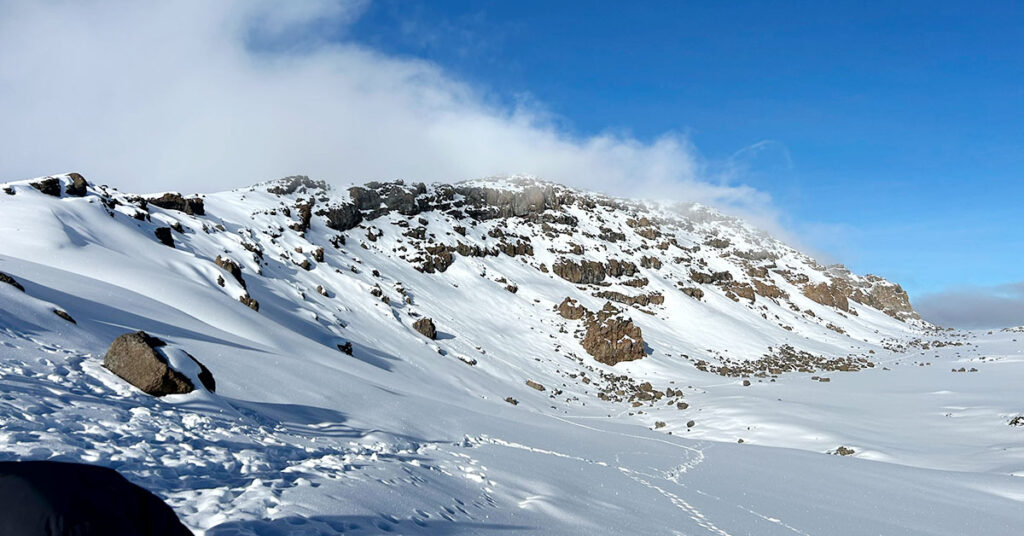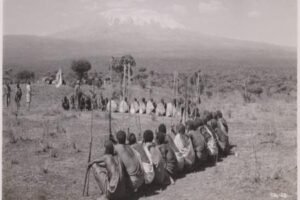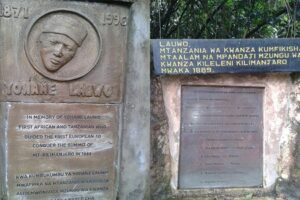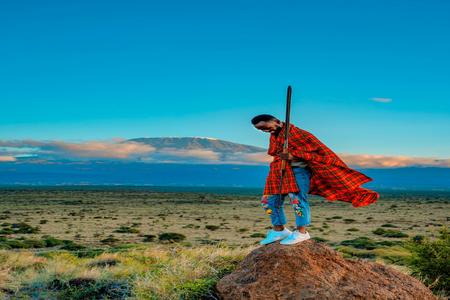Table of Contents
10 Must-Know Facts About Mount Kilimanjaro | Kili Quests
Mount Kilimanjaro isn’t just Africa’s tallest mountain — it’s a natural icon, a bucket-list trek, and a spiritual landmark. Rising to 5,895 meters (19,341 feet), Kilimanjaro draws over 35,000 climbers each year, all hoping to stand on the Roof of Africa.
Before your trek, get inspired and informed with these 10 fascinating facts every climber should know. At Kili Quests, we’re here to guide your journey from the first step to the summit.
What Is Mount Kilimanjaro? Full Guide – Start with an overview of Kilimanjaro’s geography, history, and significance.

Kilimanjaro Is a Free-Standing Mountain
Unlike most high peaks that form part of a mountain range, Mount Kilimanjaro stands completely alone, rising from the plains of Tanzania. Its massive height and isolated location make it visible from more than 100 kilometers away.
UNESCO World Wonder Article – Learn why Kilimanjaro is a natural icon and its global heritage value.
It Has Three Volcanic Cones
Kilimanjaro is made up of three ancient volcanic cones:
- Kibo – the tallest and home to Uhuru Peak
- Mawenzi – sharp, rugged, and dramatic
- Shira – the oldest and mostly eroded
All are dormant, but the mountain’s volcanic past shapes its dramatic landscape.
Three Volcanic Cones – Understand Kilimanjaro’s unique structure: Kibo, Mawenzi, and Shira.
It’s One of the World’s Most Popular Treks
Kilimanjaro is considered the world’s highest non-technical climb — no ropes or climbing gear needed. Multiple trekking routes allow people of different fitness levels to attempt the summit with proper guidance.
The Ecosystems Are Remarkably Diverse
As you ascend the mountain, you’ll pass through five distinct climate zones, from tropical rainforest to alpine desert and arctic summit. This variety supports unique flora and fauna not found elsewhere.
Explore more: Flora and Fauna on Kilimanjaro.
First Summit Was in 1889
The first recorded ascent of Kilimanjaro was by Hans Meyer and local guide Lauwo in 1889. Today, thousands follow in their footsteps — guided by experts like our team at Kili Quests.
Kilimanjaro Still Has Snow — But It’s Disappearing
The summit of Kilimanjaro is famously snow-capped, but its glaciers are melting due to climate change. Scientists estimate the ice could disappear entirely within the next few decades.

The Name “Kilimanjaro” Has Multiple Origins
The name is thought to come from Swahili and Chagga roots:
“Kilimani” = mountain
“Njaro” = light, whiteness, or greatness
It’s also been linked to old Arabic expressions for “mountain of greatness.”
Dive deeper: Why Kilimanjaro Is Called ‘Kilimanjaro’.
Best Time to Climb? Stick to Dry Seasons
The most favorable trekking months are:
- January to March (clearer summit views)
- June to October (cooler, drier weather)
Avoid April and May due to long rains — trails become muddy and slippery.
Plan smart: Best Time to Climb Kilimanjaro.
It’s a UNESCO World Heritage Site
Kilimanjaro was designated a UNESCO World Heritage Site in 1987 due to its ecological importance, biodiversity, and global cultural value. Your trek helps support its preservation.
Read more about UNESCO & Heritage site

Over 35,000 People Attempt the Summit Each Year
Every year, tens of thousands attempt the climb — but only 60–70% reach the summit. Success depends on:
- Choosing the right route
- Acclimatizing properly
- Preparing mentally and physically
Increase your chances: Training Guide.
Ready to Start Your Kilimanjaro Journey?
Mount Kilimanjaro is more than just a mountain — it’s an experience that combines nature, challenge, and personal triumph. Whether you’re an experienced hiker or a first-timer, Kili Quests is here to make your trek safe, successful, and unforgettable.
Book with Kili Quests Today
Your Kilimanjaro adventure starts here.
Contact us to plan your route, gear, and trekking dates — we’ll take care of the rest.
Related Articles

Kilimanjaro’s Name: History, Myths, and Meaning
April 15, 2025
No Comments
Table of Contents Why Kilimanjaro Is Called ‘Kilimanjaro’ | Kili Quests What Does “Kilimanjaro” Mean? Mount Kilimanjaro is the highest peak in Africa —

Uhuru Peak Meaning: Kilimanjaro’s Summit & Independence
April 15, 2025
No Comments
Table of Contents From Kaiser Wilhelm Spitze to Uhuru Peak: Kilimanjaro and Tanzania’s Independence | Kili Quests Mount Kilimanjaro’s summit is known today as

Kilimanjaro Climbing History: Lauwo’s First Summit & Chagga
April 15, 2025
No Comments
Table of Contents Who Was Lauwo? Tanzania’s First Kilimanjaro Guide | Kili Quests When talking about the first successful ascent of Mount Kilimanjaro, most people



